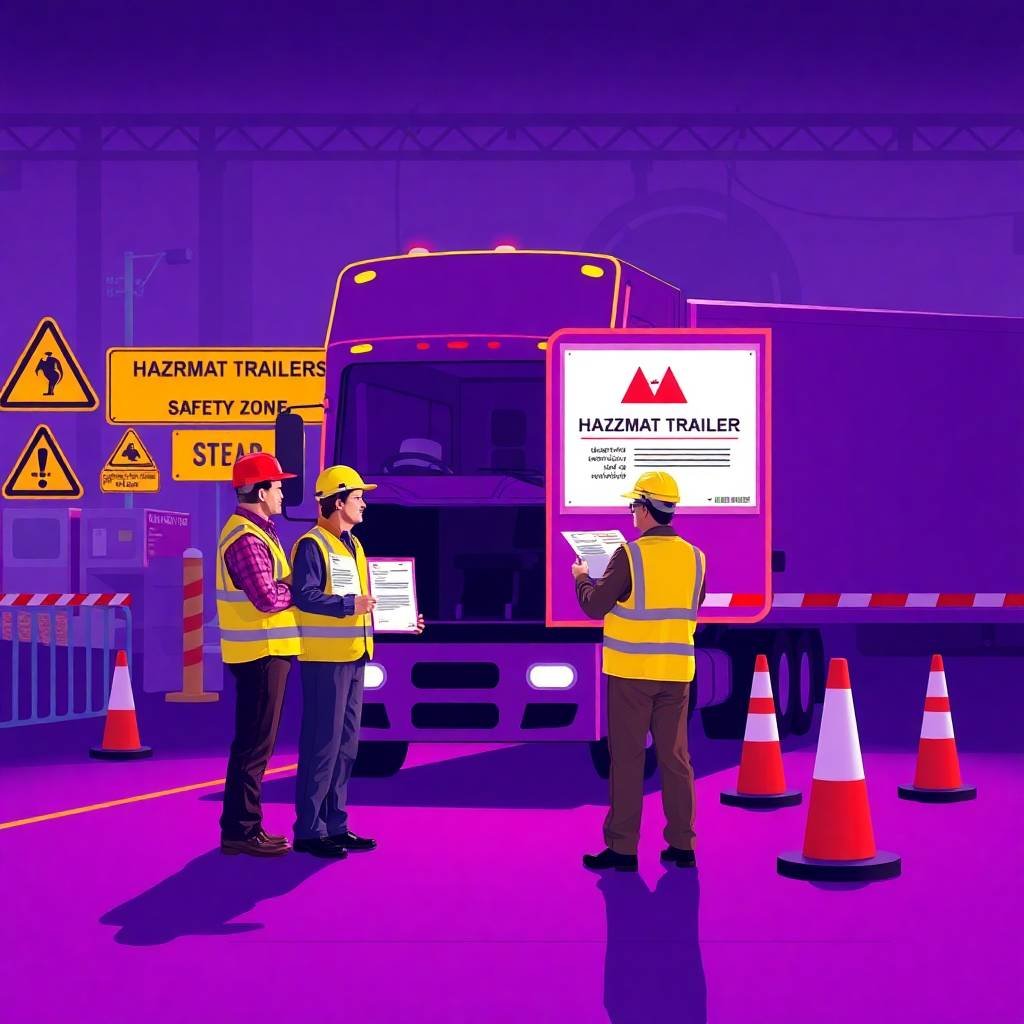1. Understanding the Basics: What Is a DOT Safety Rating and How to Improve It
For carriers operating under the authority of the U.S. Department of Transportation (DOT), a solid understanding of what is a DOT safety rating and how to improve it is essential. This rating reflects your company’s compliance with federal safety regulations, and it directly affects your ability to stay in business, secure loads, and pass audits.
What Is a DOT Safety Rating and How to Improve It?
A DOT safety rating is the Federal Motor Carrier Safety Administration’s (FMCSA) official assessment of a carrier’s safety performance. There are three possible ratings: Satisfactory, Conditional, and Unsatisfactory. Knowing what is a DOT safety rating and how to improve it can help you stay on the road and out of trouble with regulators. The FMCSA evaluates carriers based on compliance reviews, roadside inspections, and crash investigations.
To learn more about the FMCSA’s role, visit FMCSA.gov or Transportation.gov.
Why This Rating Matters
Understanding what is a DOT safety rating and how to improve it means recognizing its impact. An Unsatisfactory rating can result in the suspension of your operating authority, while a Conditional rating can deter brokers and shippers. A DOT audit preparation plan is critical to maintaining or improving your score.
Small fleet operators can benefit from using a DOT compliance checklist for owner-operators to ensure they are meeting all federal requirements.
Key Areas That Affect Your Rating
To fully grasp what is a DOT safety rating and how to improve it, you need to focus on:
- Driver Qualification Files: Ensure all driver documents are up-to-date. See our detailed guide on driver qualification file requirements.
- Drug and Alcohol Testing: Random testing, pre-employment screenings, and recordkeeping are crucial. Learn more at drug and alcohol testing compliance.
- Hours of Service (HOS) Compliance: Violations here are frequent contributors to poor safety ratings.
- Vehicle Maintenance: Regular inspections and maintenance records are a must. Explore FMCSA compliance requirements for trucking companies.
Actionable Strategies to Improve Your Rating
If you’re wondering what is a DOT safety rating and how to improve it, here are some practical steps:
- Schedule a compliance consultation to assess your current risk.
- Use our driver safety score management service to monitor real-time data.
- Get help with drug and alcohol testing management to ensure compliance with FMCSA Clearinghouse rules.
- Stay ahead of UCR filing deadlines and IFTA/IRP/BOC-3 requirements.
We also recommend exploring the CSA intervention thresholds and our guide to FMCSA compliance mistakes to avoid common pitfalls.
Be Proactive and Stay Compliant
Don’t wait until a DOT audit is scheduled. Use our FMCSA Safety Measurement System (SMS) 2025 guide and follow the DOT compliance checklist to monitor ongoing requirements. If violations occur, our team can assist with how to correct FMCSA violations.
You can view our latest compliance resources or check out FMCSA compliance help for trucking companies, services for owner-operators, and additional FMCSA services for owner-operators.
Final Word
Mastering what is a DOT safety rating and how to improve it requires consistent attention to detail, proactive planning, and leveraging expert support. For new entrants, our new entrant safety audit survival tips are a valuable starting point.
To stay protected, make sure you review our Disclaimer and Terms of Service for all services offered.

2. The 3 Types of Safety Ratings—and What They Really Mean for Your Business
Understanding what is a DOT safety rating and how to improve it is critical for any motor carrier operating under U.S. Department of Transportation (DOT) authority. Your safety rating is not just a letter grade—it’s a direct reflection of your compliance with Federal Motor Carrier Safety Administration (FMCSA) regulations. More importantly, it influences your ability to secure contracts, avoid audits, and keep your business running smoothly.
What Is a DOT Safety Rating and How to Improve It: Why It Matters
Before diving into the three safety ratings, let’s address the bigger picture. What is a DOT safety rating and how to improve it should be a core part of every fleet’s compliance strategy. Whether you manage a small team of drivers or run a large operation, safety ratings can affect your insurance premiums, broker relationships, and FMCSA scrutiny.
For more official guidance, visit FMCSA.gov or Transportation.gov. To stay updated on industry insights, check out our latest posts.
1. Satisfactory Safety Rating
The best possible outcome is a Satisfactory rating. It means your operations comply with FMCSA safety standards and pose no serious safety risks. Achieving this rating requires robust processes in place, including accurate driver qualification files, regular drug testing as outlined in drug and alcohol testing compliance, and updated records based on the DOT compliance checklist.
If you’re unsure where you stand, our driver safety score management services can help evaluate your current compliance posture and identify improvement areas.
2. Conditional Safety Rating
A Conditional rating is a warning sign. It indicates non-compliance in one or more areas of safety regulation. While not an immediate shutdown, it significantly harms your business relationships and invites future audits.
To avoid falling into this category, understanding what is a DOT safety rating and how to improve it becomes crucial. You’ll want to prepare with our DOT audit preparation service and get help correcting issues such as DQ file violations or CSA threshold overages. If drug test compliance is a concern, use our drug and alcohol testing management solution.
3. Unsatisfactory Safety Rating
The Unsatisfactory rating is the most severe. It typically leads to the revocation of your operating authority unless corrective actions are taken immediately. This rating reflects major non-compliance and unsafe practices.
If you’ve received this rating, acting fast is key. Our resources on how to correct FMCSA violations and FMCSA compliance mistakes can help you recover. You should also explore new entrant safety audit survival tips if you’re new to the industry.
Building a Path to a Better Rating
Knowing what is a DOT safety rating and how to improve it means developing a long-term compliance culture. From pre-employment DOT drug testing to random DOT testing, and even managing IFTA/IRP/BOC-3 filings, attention to detail makes all the difference.
Schedule a consultation via Calendly to create a custom improvement plan. We also provide complete FMCSA compliance services for owner-operators and UCR filing assistance.
Stay Compliant, Stay Competitive
Understanding what is a DOT safety rating and how to improve it empowers you to protect your business, your drivers, and your future. Explore additional guidance at FMCSA Clearinghouse Compliance, review our Terms of Service, and read our Disclaimer for full transparency.
For more insights and compliance solutions, visit our compliance help page or browse our full services library.

3. Audit Triggers to Avoid: What Causes a Safety Rating Downgrade
Every motor carrier should understand what is a DOT safety rating and how to improve it—especially when one misstep can result in a downgraded rating. Your safety rating reflects your compliance with Federal Motor Carrier Safety Administration (FMCSA) regulations and is one of the most important factors influencing your company’s reputation, operations, and future audits.
Downgrades don’t happen randomly. There are common audit triggers that every trucking company should proactively manage to protect their safety record and maintain a “Satisfactory” rating.
What Is a DOT Safety Rating and How to Improve It: Understanding the System
The FMCSA assigns one of three safety ratings—Satisfactory, Conditional, or Unsatisfactory—based on compliance reviews and roadside inspection performance. According to FMCSA.gov and Transportation.gov, your safety rating is tied to your ability to adhere to safety management controls, vehicle maintenance, driver files, drug and alcohol testing programs, and more.
If you’re still asking, what is a DOT safety rating and how to improve it, start with our DOT audit preparation guide and DOT compliance checklist.
Trigger #1: Poor SMS Scores and CSA Violations
The FMCSA Safety Measurement System (SMS) identifies carriers with potential compliance problems. High scores in Behavior Analysis and Safety Improvement Categories (BASICs) trigger interventions. To reduce risk, review the FMCSA Safety Measurement System 2025 update and take steps through our driver safety score management service.
Trigger #2: Inadequate Driver Qualification Files
If your DQ files are incomplete or outdated, you’re at risk. Learn how violations impact your safety rating in our DQ file violations guide. Ensure full compliance with our driver qualification file requirements checklist to avoid triggering an audit.
Trigger #3: Drug and Alcohol Testing Failures
Non-compliance in your drug and alcohol testing program is a red flag. Use our drug and alcohol testing management solution and stay aligned with drug and alcohol testing compliance. You should also understand pre-employment and random DOT testing requirements thoroughly.
Trigger #4: Repeat Violations and FMCSA Compliance Mistakes
One-time violations can be corrected, but repeat offenses lead to conditional or unsatisfactory ratings. Use our guide on FMCSA compliance mistakes and get support through our compliance help center.
Trigger #5: Ignoring UCR, IFTA, or BOC-3 Filings
Many companies overlook Unified Carrier Registration (UCR) or International Fuel Tax Agreement (IFTA) deadlines, but they can trigger audits. Use our IFTA/IRP/BOC-3 support and UCR filing assistance to avoid penalties.
Strengthening Your Rating Starts Today
Knowing what is a DOT safety rating and how to improve it empowers you to take action before FMCSA enforcement escalates. Our team helps with everything from new entrant safety audits to correcting FMCSA violations. For tailored support, book a 30-minute consultation today.
For more in-depth guidance, explore our full suite of FMCSA compliance services and resources for trucking companies. You can also view previous compliance posts for ongoing education.
For legal clarity, read our Disclaimer and Terms of Service.
What is a DOT safety rating and how to improve it should always remain a top priority—because compliance is more than a checklist, it’s the foundation of your trucking business’s success.

4. Data-Driven Decisions: How the FMCSA Safety Measurement System (SMS) Impacts Your Rating
When evaluating what is a DOT safety rating and how to improve it, trucking companies must first understand the role of the FMCSA Safety Measurement System (SMS). This data-driven platform is central to the Federal Motor Carrier Safety Administration’s mission of ensuring road safety and regulatory compliance. But for motor carriers, it’s much more than a government tool—it’s a critical component that directly impacts your safety rating and operational future.
What Is a DOT Safety Rating and How to Improve It Using SMS Insights
The FMCSA’s SMS analyzes roadside inspection data, crash reports, and investigation results to assign percentile rankings across seven Behavior Analysis and Safety Improvement Categories (BASICs). These categories—ranging from Hours of Service to Drug/Alcohol compliance—highlight areas where carriers may pose increased safety risks.
To begin improving your safety standing, start with a complete review of the FMCSA SMS 2025 updates and align your operations using our DOT compliance checklist and driver safety score management tools.
Why SMS Data Matters for Your Business
If you’ve ever wondered what is a DOT safety rating and how to improve it, SMS data provides the answer. Poor BASIC scores trigger FMCSA audits and possible interventions. Your scores are visible to shippers, brokers, and insurance providers, influencing your reputation and cost of doing business.
Carriers struggling with their scores can use our CSA intervention thresholds guidance to understand when FMCSA scrutiny is imminent.
Target Areas to Monitor for a Higher Safety Rating
To maintain or improve your rating, focus on data-intensive categories like Vehicle Maintenance, Controlled Substances, and Driver Fitness. Tools like our drug and alcohol testing management service help monitor compliance with random DOT drug testing requirements and pre-employment testing protocols.
Keeping DQ files accurate and avoiding DQ file violations is also essential. These details contribute to your SMS profile and influence how your rating is assessed.
Tools to Correct and Prevent Violations
Companies facing repeated violations can improve their standing with our how to correct FMCSA violations guide. Additionally, use our DOT audit preparation service to prepare for compliance reviews, and explore tips in our audit survival article.
Stay on top of regulatory requirements with support from our IFTA/IRP/BOC-3 experts and ensure timely UCR filings. If your team struggles with compliance management, book a 30-minute strategy session with one of our experts.
Staying Compliant Means Staying Competitive
Ultimately, what is a DOT safety rating and how to improve it is about more than avoiding fines—it’s about protecting your brand, lowering insurance costs, and winning more contracts. Partner with Truckers Compliance Hub to access FMCSA compliance help, including owner-operator services and full-service compliance management.
To stay informed, visit our homepage to view the latest articles, and explore important regulations at FMCSA.gov and Transportation.gov.
For your reference, please review our Disclaimer and Terms of Service for more information. Keeping pace with data is the smartest way to master what is a DOT safety rating and how to improve it—and to keep your fleet safe, compliant, and profitable.

5. Vehicle Maintenance and Driver Files: Keys to Improving Your DOT Safety Rating
Understanding what is a DOT safety rating and how to improve it is essential for every trucking company looking to thrive in today’s competitive transportation industry. Your safety rating, determined by the Federal Motor Carrier Safety Administration (FMCSA), is heavily influenced by two critical areas: vehicle maintenance and driver qualification files. Neglecting either can lead to costly violations, audits, and even a downgraded safety rating.
Why Maintenance and Driver Files Matter in Your DOT Safety Rating
If you’re asking what is a DOT safety rating and how to improve it, know that your fleet’s condition and the accuracy of your driver files are among the first things inspectors evaluate. These factors are heavily weighted within the FMCSA Safety Measurement System (SMS). To better understand how SMS data impacts your rating, review our detailed breakdown of the FMCSA SMS 2025 changes.
Vehicle defects, like lighting issues or brake violations, and missing documentation in driver files can trigger enforcement actions. Use our DOT compliance checklist or the checklist for owner-operators to stay ahead of these risks.
The Role of Vehicle Maintenance in FMCSA Compliance
Keeping your vehicles in safe, operational condition is not optional—it’s a legal requirement. Regular inspections, documented repairs, and up-to-date maintenance logs are the foundation of any effort to improve your safety rating. Carriers that prioritize maintenance also perform better in roadside inspections, a key area the FMCSA tracks.
If violations do occur, knowing how to correct FMCSA violations quickly is vital. Our team can help with driver safety score management and compliance strategies to protect your fleet’s standing.
Driver Qualification Files: A Hidden Threat to Your Safety Rating
Accurate and complete driver qualification files (DQFs) are essential. From license verification to medical certifications, these records prove your drivers are eligible to operate safely. Failing to maintain them can result in DQ file violations and hurt your safety record.
Need help? We offer support with DQ compliance, audit survival tips, and guidance for drug and alcohol testing compliance including pre-employment and random testing.
Take Action Before FMCSA Intervenes
Delaying compliance efforts can push your scores over the CSA intervention thresholds, leading to audits or even a downgraded safety rating. Proactive management of your maintenance schedules and driver records is one of the smartest ways to improve your standing.
Learn more about what is a DOT safety rating and how to improve it in our guide to FMCSA compliance requirements, and avoid common compliance mistakes that other carriers make.
Schedule Your Consultation Today
Don’t wait until violations stack up. Schedule a 30-minute consultation with our team to assess your maintenance and driver file compliance. We also offer full-service support for UCR filing, IFTA/IRP/BOC-3, and drug and alcohol program management.
For more insights on what is a DOT safety rating and how to improve it, view our latest posts, and explore helpful resources from the FMCSA and U.S. Department of Transportation.
Please review our Disclaimer and Terms of Service for complete information on using our website and services. To dive deeper, explore our FMCSA compliance help or dedicated owner-operator services.

6. From Risk to Resilience: How Safety Score Management and Drug Testing Programs Help
For any motor carrier wondering what is a DOT safety rating and how to improve it, the answer lies in how well you manage risk—and that starts with your safety scores and drug testing programs. The Federal Motor Carrier Safety Administration (FMCSA) uses a data-driven approach to assess carrier performance, and both driver behavior and substance use violations weigh heavily in determining your safety rating.
Why Your Safety Rating Matters
Understanding what is a DOT safety rating and how to improve it begins with recognizing how safety scores influence everything from insurance premiums to DOT audits and contract opportunities. Poor scores not only trigger CSA intervention thresholds but may also lead to DOT audits or worse—operations being shut down.
Carriers should reference the FMCSA’s Safety Measurement System (SMS) 2025 to better understand how performance is scored and what changes are ahead.
The Power of Safety Score Management
If you’re aiming to improve your rating, implementing driver safety score management is crucial. Tracking behaviors such as speeding, unsafe driving, and maintenance violations helps identify patterns and intervene early. These insights are integral to grasping what is a DOT safety rating and how to improve it.
Start by reviewing your status with our DOT compliance checklist or the owner-operator checklist to ensure all required processes are in place.
Need personalized support? Schedule a consultation to assess your safety data and compliance posture.
Drug Testing Compliance: A Critical Safety Measure
One of the most overlooked components of DOT compliance is the drug and alcohol testing program. Yet, it’s one of the most damaging if neglected. Knowing what is a DOT safety rating and how to improve it means taking drug and alcohol testing compliance seriously.
From pre-employment testing to random testing, your program must follow strict FMCSA guidelines. The Driver Drug and Alcohol Testing Program and FMCSA Clearinghouse Compliance are not optional—they are mandatory tools for protecting your business.
Explore how we can manage your drug and alcohol testing program and ensure you’re always audit-ready.
Strengthen Compliance and Avoid Costly Mistakes
Many carriers only ask what is a DOT safety rating and how to improve it after they’ve made costly FMCSA compliance mistakes. Whether it’s missing driver qualification files, failing UCR filings, or violating IFTA/IRP regulations, these oversights accumulate fast.
If you’re already facing violations, our guide on how to correct FMCSA violations can help you take immediate action. We also support new entrants in surviving initial audits and meeting all FMCSA compliance requirements.
Build Resilience with Expert Support
The journey from risk to resilience starts with understanding what is a DOT safety rating and how to improve it. Our team at Truckers Compliance Hub provides comprehensive support and services designed to keep your operations compliant and profitable. Visit our homepage to read the latest insights and industry updates.
For more valuable tools and guidance, explore our dedicated services for owner-operators, browse our compliance resources, and view our terms and disclaimer for complete details.
Stay compliant. Stay competitive. Know what is a DOT safety rating and how to improve it—and take action today.

7. Your Compliance Action Plan: Schedule a Consultation to Protect Your Rating
Understanding what is a DOT safety rating and how to improve it is not just a regulatory requirement—it’s a business imperative. A poor rating can restrict your operations, increase insurance costs, and damage your reputation. Creating a proactive compliance action plan is key to protecting your rating and ensuring long-term success in the trucking industry.
Why You Need a Compliance Action Plan
When truckers and carriers ask, what is a DOT safety rating and how to improve it, the answer starts with planning. The Federal Motor Carrier Safety Administration (FMCSA) assigns safety ratings based on roadside inspections, crash reports, and audits. A solid compliance action plan minimizes violations, corrects deficiencies, and boosts your overall safety performance.
Start by reviewing the FMCSA Safety Measurement System (SMS) 2025 update to understand what metrics affect your score. If you’re unsure where your fleet stands, begin with our DOT compliance checklist or the owner-operator version.
The Role of Professional Consultation
If you’re serious about learning what is a DOT safety rating and how to improve it, the next step is expert guidance. Schedule your consultation today to work directly with our compliance specialists. We evaluate your current status and design a customized plan to resolve violations and prevent future issues.
Our team helps with everything from driver qualification file management to drug and alcohol testing compliance, ensuring your program aligns with FMCSA guidelines. Explore our full compliance services for trucking companies to see how we support your operations.
Key Areas to Address
To truly understand what is a DOT safety rating and how to improve it, carriers must focus on common risk areas. These include:
- Drug and alcohol testing programs: Ensure you meet pre-employment and random testing standards.
- DQ file compliance: Avoid violations by keeping files current and audit-ready.
- Safety score management: Monitor driver behavior to reduce risk.
- Correcting violations: Take immediate steps to address existing issues.
If you’re a new entrant, don’t miss our safety audit survival tips. Already facing FMCSA compliance mistakes? We’ll help you get back on track.
Take Control of Your Compliance Today
Now that you know what is a DOT safety rating and how to improve it, don’t leave your compliance to chance. Whether you need support with IFTA/IRP, UCR filings, or DOT audit preparation, Truckers Compliance Hub has you covered.
Visit truckerscompliancehub.com to view our latest updates and subscribe to stay informed. Explore our specialized services for owner-operators and check out our terms of service and disclaimer for details.
Stay ahead of audits, reduce violations, and secure your future in trucking. Understand what is a DOT safety rating and how to improve it—and take action now. Learn more at FMCSA.gov and Transportation.gov, or speak to our experts by scheduling your consultation today.

What Is a DOT Safety Rating and How to Improve It if My Company Receives a Conditional Rating?

A Conditional rating means your operation has compliance issues that must be resolved to avoid penalties or restrictions. The first step in improving it is understanding what is a DOT safety rating and how to improve it through thorough file management, vehicle inspections, and driver compliance. Utilizing professional DOT audit preparation services can help you correct deficiencies before they escalate into FMCSA violations.
How Often Should I Review My Safety Rating and What Tools Can Help?

You should review your safety rating monthly through your FMCSA portal and regularly audit your compliance procedures. Knowing what is a DOT safety rating and how to improve it means having the right support systems in place. Tools like DQ file setup and monitoring services ensure that your driver qualification files remain compliant, which plays a critical role in maintaining a favorable safety rating.
Can Drug and Alcohol Testing Violations Impact My DOT Safety Rating?

Absolutely. Drug and alcohol testing violations are among the top reasons carriers receive poor safety ratings. Understanding what is a DOT safety rating and how to improve it requires recognizing how vital a compliant drug and alcohol testing management program is. These programs ensure random testing is done correctly and records are maintained to meet FMCSA standards.
Is UCR Filing Related to My DOT Safety Rating and Compliance?

While Unified Carrier Registration (UCR) isn’t a direct component of your safety rating, failure to comply with it signals broader compliance issues that can trigger audits. Part of understanding what is a DOT safety rating and how to improve it is ensuring every regulatory requirement, including UCR filing assistance, is properly handled to demonstrate operational responsibility.
What Role Do IFTA, IRP, and BOC-3 Filings Play in Safety Rating Management?

Though these filings are regulatory rather than safety-specific, errors can still prompt enforcement actions that draw attention to your fleet. Knowing what is a DOT safety rating and how to improve it includes properly managing paperwork such as IFTA, IRP, and BOC-3 filings to avoid unnecessary audits that could expose other compliance gaps.
Igor Iturriaga is a transportation compliance expert and founder of Dynamic 305 Miami LLC. He helps owner-operators and fleets stay FMCSA-compliant and audit-ready. https://www.linkedin.com/in/igor-iturriaga-64503217/
